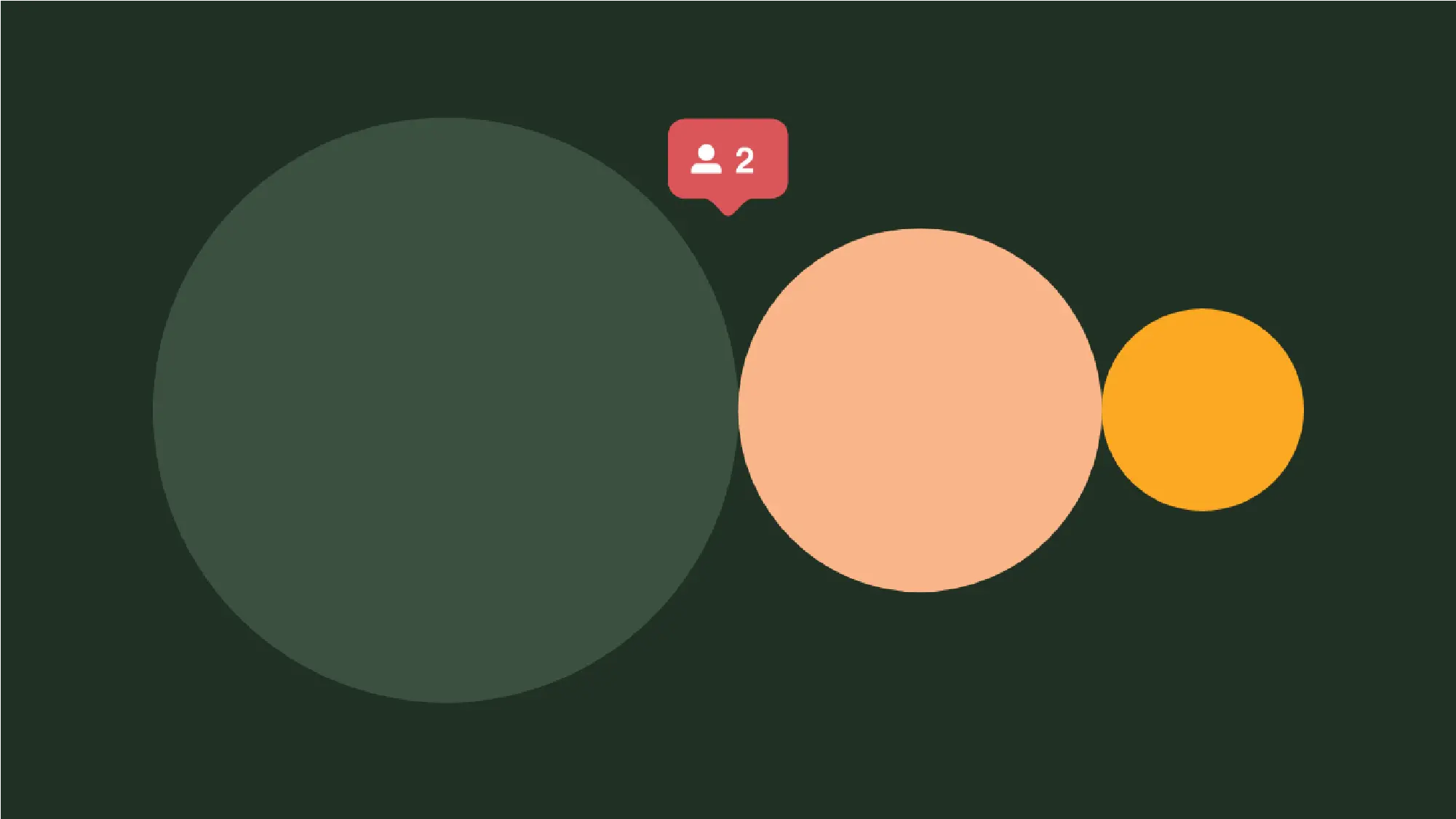Colors are the silent communicator, the mood setter, and the memory marker for your brand. With the right choice of colors, your brand can spark recognition, tell its story, and create a deep emotional connection with your target audience.
Let me tell you, choosing your brand colors is like creating the soul of your brand's visual identity. Whether you're a wellness coach brewing a serene and healing color palette, or a life coach stirring up dynamic and inspiring hues, your colors are a fundamental part of your brand's journey.
Ready to explore the art and science of choosing brand colors that are not just appealing but strategic and meaningful? Perfect! Grab your favorite cozy drink, settle in, and let's dive into this vibrant world together!
↘️ If you're short on time today or prefer the TLDR version, just head over to the free training: Get Your Brand Together for a step-by-step guide on how to build your brand color palette intentionally.
Understanding the role of color in branding
Have you ever caught yourself wondering why you instantly recognize a Coca-Cola can from afar, even without catching a glimpse of the logo? Or why do you feel a certain comfort or trust when you see your favorite brands? That, my friend, is the power of color in branding.
A well-chosen brand color palette works wonders in cementing your brand's identity. It's like your brand's signature tune, but in color. Surprisingly, it's not just your logo doing the heavy lifting; it's the colors you pick that really make your brand sing and dance in people's minds.
Did you know that color can ramp up brand recognition by an astounding 80%? That's right! So, if you've been underestimating the role of color in your branding game, it's about time we change that.
The colors you choose will narrate your brand's story, conveying its brand personality traits, values, and ethos without uttering a single word. By choosing the right shades and combinations, you can make your brand truly memorable and influence how your audience interacts with it.
Let's start with the basics and then move into the nitty gritty...

How many colors do you need in your brand color palette?
Curious about how many colors should be in your brand color palette?
Here's my mantra - keep it simple!
While it's tempting to create a rainbow of options, a concise palette of no more than five colors is your sweet spot.
Why, you ask? This minimalist approach keeps any potential confusion at bay and helps uphold that oh-so-important brand consistency.
Consider your brand color palette as your brand's fashion guide - it sets the tone for how your brand dresses on every occasion across all platforms and mediums. It's the underpinning of your visual identity, dictating the overall feel of your brand. So choose wisely and keep it uncluttered!

For brands requiring a diverse color scheme
Brands requiring a diverse color scheme should adopt a careful approach to avoid overwhelming the audience.
Starting with three different shades is a good rule of thumb, especially when setting up your Squarespace brand kit or Canva brand kit. More colors can be added as your brand evolves, but it's crucial to keep your palette cohesive and balanced. Remember, your color palette should always reflect your brand personality.
Make sure to document all your hex codes in your brand guidelines to make it easy to maintain brand consistency.

What kinds of colors do you need in your brand palette?
Your brand palette should include a primary and secondary colors along with a tertiary, or accent color.
Differentiating between primary, secondary, and tertiary colors

Primary
Your primary color is the most dominant brand color in your palette. It is what your brand will be most known for.

Secondary
Secondary colors work great as backgrounds or accents in your brand color scheme. They complement your primary color and help in breaking the monotony.

Tertiary
Tertiary colors, though used less, can add depth and variation to your palette. They are used sparingly to highlight, accent, or bring attention to specific elements.

How to begin selecting your brand colors?
The process of selecting your brand color palette is a strategic one, connecting directly with the brand personality you've established.
Using color psychology, you can align color meanings with your Key Brand Attributes and build color combinations that convey specific emotions and evoke intuitive responses from your audience. It's all about selecting colors that align with your brand personality and the feelings you want to evoke.

Exploring different color combinations
When it comes to color schemes for your brand, think of it like being a kid in a candy store – so many exciting options to explore!
Experimenting with different shades
The color wheel is your playground, brimming with an array of warm colors like vibrant reds, sunny oranges, and cheery yellows. On the other hand, we have the serene, cool colors. Consider the depth of the color blue, for instance, which ranges from a tranquil baby blue to a navy blue.
Let's not forget the importance of neutrals: the classic black, white, and versatile grays. These often play the role of unsung heroes in color palettes, providing the perfect backdrop for your chosen colors to truly shine.

Complementary colors also play an exciting part in this journey of building your brand's color identity. Understanding how these colors interact on the color wheel is like learning a new language, one that communicates your brand's personality traits and story visually!
As you experiment with different color schemes and palettes, remember, you're not just selecting pretty colors. You're setting the tone, the mood, and the personality for your brand. So, have fun, play around, and let's create a color combination that's uniquely and authentically you!

Using color psychology in your branding: build your brand personality
Color psychology is a study that looks at color meanings and how colors influence human behavior and decision-making.
Different colors can evoke different emotions, feelings, and reactions. For instance, blue is often associated with trust and reliability, red with excitement and passion, and green with nature and tranquility. By understanding color psychology, you can not only strengthen brand awareness but choose colors that align with your brand's personality and the message you want to convey.
Head over to this article for a deeper dive into color psychology.

The importance of balance in your color palette
Remember, balance is crucial. Yes, aesthetics are important, but your brand color schemes' primary aim should be to create a brand everyone can enjoy and navigate effortlessly. Your brand colors should work together harmoniously, each complementing the others. The right color balance can create a visually pleasing and effective color scheme that is engaging, memorable, and aligned with your brand personality.
Colors for brand familiarity: Two great examples

Selena Gomez's Rare Beauty
Rare Beauty by Selena Gomez has a color palette that truly embodies the essence of its name – rare and distinct. The brand primarily uses a combination of soft pink and bold burgundy colors, creating an inviting yet powerful brand identity. The soft pink resonates with the brand's core values of self-love and compassion, while the bold burgundy denotes strength and resilience. The brand also has a minimalist approach, balancing white/negative space along with the base colors. This simplicity allows the brand colors to take center stage, reflecting Selena Gomez's vision of celebrating individuality and self-expression through Rare Beauty.

Rha Goddess's Move The Crowd
Rha Goddess's Move The Crowd, a coaching and consulting platform, pops off the screen with a primary color of purple that's as passionate as the mission behind the brand. This isn't your ordinary shade of purple, but one that speaks volumes about empowerment, and resonates with those who are serious about making a difference. Purple, in all its glory, aligns perfectly with Move The Crowd's mission—empowering go-getters to uncover their potential and carve their entrepreneurial path. It's more than just a color—it's a visual echo of the brand's spirit, a reminder of the transformative journey Rha Goddess and her platform are guiding you through.

Brand color palette accessibility
Inclusivity should be top of mind when selecting colors for your brand. Begin by identifying the essence of your brand personality and nailing the HEX codes.

Tools for ensuring color accessibility
Once you've determined your color scheme, make sure to pop those brand color codes in one of these tools and make sure it's accessible to everyone. Tools like Color Safe, WebAIM, and Contrast Checker can help you select and test accessible colors.
The goal is to create an inclusive brand color palette that appeals to a diverse audience. They can ensure that your color palette is not just aesthetically pleasing but also functional and accessible.
Tutorial: How to check if your palette is color blind safe
This tutorial walks you through the Adobe Accessibility Tool, showcasing how I ensure the chosen colors are friendly to all viewers:
Now that you know the importance of color in establishing your brand identity, the role of different colors in your palette, and how crucial it is for brand colors to be accessible, it's your turn to create your own unique and powerful brand colors!
Get Your Brand Together
If you're looking for inspiration, consider checking out Get Your Brand Together and the Color Psychology Guide.
Happy branding!
YAY! WAS THAT HELPFUL?
You might also like…
Verô's Color Psychology Guide
Create an online presence that people remember by using the right colors.
Learn more







